I have researched enough to get this working but not able to fix it. After taking picture from camera as long as I have image stored as UIImage, it's fine but as soon as I stored this image as PNG representation, its get rotated 90 degree.
Following is my code and all things I tried:
- (void)imagePickerController:(UIImagePickerController *)picker didFinishPickingMediaWithInfo:(NSDictionary *)info
{
NSString *mediaType = [info valueForKey:UIImagePickerControllerMediaType];
if([mediaType isEqualToString:(NSString*)kUTTypeImage])
{
AppDelegate *delegate = (AppDelegate *)[[UIApplication sharedApplication] delegate];
delegate.originalPhoto = [info objectForKey:@"UIImagePickerControllerOriginalImage"];
NSLog(@"Saving photo");
[self saveImage];
NSLog(@"Fixing orientation");
delegate.fixOrientationPhoto = [self fixOrientation:[UIImage imageWithContentsOfFile:[delegate filePath:imageName]]];
NSLog(@"Scaling photo");
delegate.scaledAndRotatedPhoto = [self scaleAndRotateImage:[UIImage imageWithContentsOfFile:[delegate filePath:imageName]]];
}
[picker dismissModalViewControllerAnimated:YES];
[picker release];
}
- (void)saveImage
{
AppDelegate *delegate = (AppDelegate *)[[UIApplication sharedApplication] delegate];
NSData *imageData = UIImagePNGRepresentation(delegate.originalPhoto);
[imageData writeToFile:[delegate filePath:imageName] atomically:YES];
}
Here fixOrientation and scaleAndRotateImage functions taken from here and here respectively. They works fine and rotate image when I apply them on UIImage but doesn't work if I save image as PNG representation and apply them.
Please refere the following picture after executing above functions:
